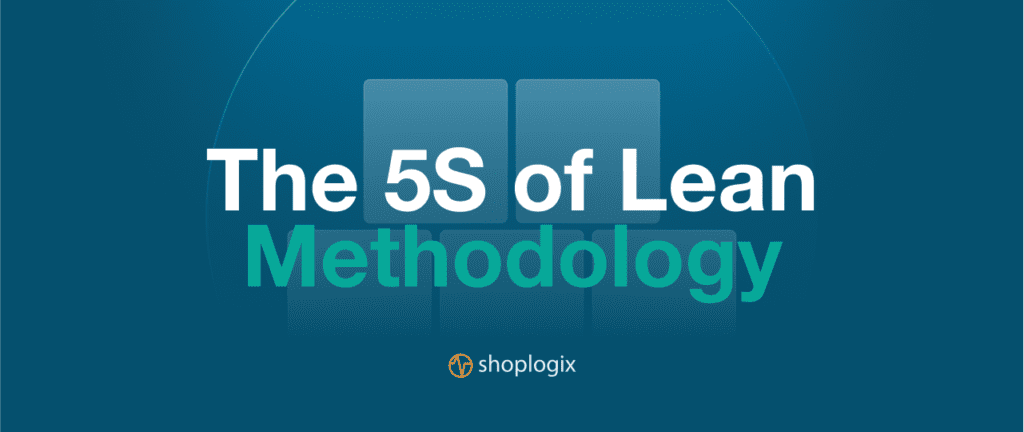Lean Inventory Management offers a practical solution for manufacturers looking to enhance efficiency and reduce waste. It focuses on optimizing inventory levels to match production needs, ensuring that resources are utilized effectively.
Read on to learn how implementing lean methods in your inventory management can lead to improved operations and cost savings, positioning your business for greater success.
What is Lean Inventory Management?
Lean inventory management is about enhancing the value of a company’s stock by cutting down on waste in handling materials, managing labor, and optimizing time through continuous improvements in manufacturing. Traditionally, production was often based on forecasts or guesses about what customers might want. Lean inventory shifts focus towards maintaining only the necessary stock for a specific period, avoiding excess.
Originating in Japan, this approach sought to eliminate ‘Muda’ or waste, notably improving product value. Toyota Motor Corporation is a prime example of this strategy in action, with its adoption of a make-to-order system and ongoing refinement of production processes to adapt to economic conditions post-World War II.
To implement lean manufacturing inventory management effectively, it involves:
- Making manufacturing routes more efficient
- Cutting out unnecessary manufacturing steps
- Rethinking how stock is kept
Lean inventory management revolves around five basic principles aimed at reducing waste in materials, time, and effort while striving for continuous improvement. These principles, which have broadened from Henry Ford’s early 20th-century “continuous flow” concept, are crucial across different sectors. They include:
- Value
- Flow
- Pull (using Kanban)
- Responsiveness (through continuous improvement or Kaizen)
- Perfection (applying Six Sigma)
In the 1980s, Total Quality Management (TQM) and Six Sigma were reintroduced into American businesses, promoting principles that lean inventory management now embraces to lower costs and improve quality. Techniques like Value Analysis (VA) and Voice of the Customer (VOC) from Six Sigma help in cutting costs further while aiming to surpass customer expectations.
Lean management combines practical tools, a philosophy of minimizing excess resources, and a structured approach to streamline operations. This blend assists in selecting accurate methods for enhancement, emphasizing resource efficiency and boosting customer satisfaction. Successful lean inventory management depends on applying these principles effectively, offering substantial advantages by applying key practices across different operational areas.

The 5S of Lean
The 5S of Lean methodology is a cornerstone of implementing lean practices in any organization, focusing on creating an organized, efficient, and safe environment that leads to increased productivity and reduced waste. While often associated with physical organization, the principles of 5S can also be applied to broader operational processes, including inventory management. Here, we’ll explore how the 5S framework—Sort, Set in order, Shine, Standardize, and Sustain—parallels the foundational principles of Lean: Value, Value Stream, Flow, Pull, and Perfection.
Value
Sort (Seiri): The first step, Sort, involves removing unnecessary items and clutter from the workplace. In terms of Value, this means identifying the parts of your operation that truly add value to your product or service and eliminating those that do not. By doing so, you focus resources and efforts on what matters most to your customers, enhancing the overall value of your offering.
Value Stream
Set in Order (Seiton): After sorting, the next step is to organize what remains. This mirrors the principle of mapping out the Value Stream, where you identify and organize the steps in your production process to ensure they are logical and efficient. By setting everything in its place, both physically and procedurally, you minimize time wasted on searching for tools or information and make it easier to identify bottlenecks or inefficiencies in your process.
Flow
Shine (Seiso): The third principle, Shine, focuses on cleaning and maintaining the workspace. This concept aligns with ensuring a smooth Flow in operations, where regular maintenance and checks prevent errors and slowdowns in the production process. By keeping equipment and workspaces clean and in good repair, you ensure that your operations can run smoothly without unexpected interruptions.
Pull
Standardize (Seiketsu): Standardization is about creating consistent ways of working and best practices across the organization. Similarly, the Pull principle in Lean focuses on demand-driven production, where standard processes are crucial for ensuring that products are created as needed, reducing overproduction and inventory costs. By standardizing tasks and workflows, employees can work more efficiently, and the system can adapt quickly to changes in demand.
Perfection
Sustain (Shitsuke): The final step of the 5S method is about sustaining the gains made through the previous steps and continuously improving. This ties directly to the Lean principle of Perfection, which is an ongoing pursuit of excellence and efficiency. Sustaining requires a culture of continuous improvement, where employees are encouraged to identify inefficiencies and suggest improvements, ensuring that the organization is always moving towards greater efficiency and value creation.
Attributes of Lean Inventory Management
Lean inventory management is underpinned by six essential attributes that collectively contribute to its effectiveness. These attributes not only streamline operations but also enhance customer satisfaction and operational efficiency:
- Demand Management: At the heart of lean inventory management lies the ability to fulfill inventory precisely when the customer demands it. This requires meticulous planning of sales and operations, alongside a thorough review of inventory practices, demand signals, and collaborative demand forecasting. It’s about creating a responsive inventory system that aligns closely with market needs.
- Cost and Waste Reduction: The principle of minimizing waste and costs is central to lean inventory management. However, this focus must be balanced carefully with maintaining or enhancing customer value. Reducing waste and costs should never compromise the quality or availability of products that customers value.
- Process Standardization: Streamlining inventory flow within an organization is crucial for maintaining continuous movement of goods. Eliminating obstacles such as inefficient transportation, batch processing delays, and excessive work-in-queue is essential for speeding up inventory delivery and ensuring timeliness.
- Industry Standardization: While standardizing processes and products across industry players can minimize waste and improve service delivery, it’s important to also consider the impact on product uniqueness. Standardization should be pursued in a way that still allows for differentiation, ensuring that competitive advantages can be maintained beyond just the standardized elements.
- Cultural Change: A shift in mindset is necessary among all inventory stakeholders, from suppliers to customers, to foster a collaborative environment focused on delivering value. Embracing a culture of teamwork and shared goals is pivotal in achieving the full benefits of lean inventory management.
- Cross-Enterprise Collaboration: Effective lean inventory management extends beyond the confines of a single enterprise, requiring active collaboration across different organizations. By working together, companies can better define value, understand the value stream, and maximize the benefits delivered to customers. This collaborative effort helps in aligning objectives and streamlining the supply chain for optimum efficiency.
These attributes represent the foundational pillars of lean inventory management, emphasizing not just the operational aspects but also the importance of collaboration, culture change, and strategic balance between cost reduction and customer value enhancement.
How to Use Lean Inventory Management in Your Manufacturing Process
Implementing lean inventory management in your manufacturing process can significantly enhance efficiency, reduce waste, and improve customer satisfaction. Here’s a step-by-step guide on how to integrate lean principles into your manufacturing operations:
- Understand Customer Value: Begin by identifying what your customers value the most about your products. Understanding customer needs and expectations allows you to focus your efforts on what truly matters, ensuring that every aspect of your inventory management contributes to delivering value.
- Evaluate Your Value Stream: Map out your entire production process, from raw materials to the delivery of the final product. This value stream mapping will help you see where delays, excess inventory, or unnecessary steps occur. Identifying these areas is crucial for streamlining operations and reducing waste.
- Implement a Pull System: Shift from a traditional push production system, where products are made in anticipation of demand, to a pull system that is driven by actual customer demand. This approach requires robust demand forecasting and flexible production capabilities but significantly reduces overproduction and inventory holding costs.
- Adopt JIT (Just-In-Time) Production: Just-in-time production is a key element of lean inventory management, aiming to have materials and products available exactly when they’re needed, not before. This reduces the need for large inventories and minimizes storage costs.
- Standardize Processes: Standardizing work processes and procedures helps in creating a smooth, predictable flow of materials through the production line. Consistency in operations makes it easier to identify inefficiencies and ensures that improvements can be effectively implemented.
- Focus on Continuous Improvement: Lean inventory management is not a one-time effort but a continuous cycle of improvement. Encourage feedback from employees at all levels, regularly review your processes, and be open to making adjustments. The goal is to perpetually seek ways to reduce waste and enhance value.
- Foster a Lean Culture: Cultivating a culture that embraces lean principles is critical for sustainable success. This involves training your team on lean concepts, encouraging open communication, and promoting problem-solving and innovation.
- Leverage Technology: Modern inventory management software and other technological tools can provide real-time data, automate demand forecasting, and streamline production scheduling. Investing in technology supports lean practices by providing accurate information that aids decision-making and improves responsiveness.
- Collaborate with Suppliers and Customers: Extend lean principles beyond your organization by working closely with suppliers and customers. Collaborative relationships help in synchronizing supply chains, reducing lead times, and ensuring that your lean inventory management efforts are supported from both ends of the supply chain.
- Measure and Adjust: Establish metrics to track the performance of your lean inventory management initiatives. Regularly reviewing these metrics allows you to measure your progress and make necessary adjustments to continue driving improvements.
By following these steps, manufacturers can effectively implement lean inventory management, leading to a more responsive, efficient, and cost-effective production process. The key to success lies in commitment to the principles of lean, continuous improvement, and a holistic approach that involves your entire team and supply chain partners.
Shoplogix and Lean Manufacturing
Manufacturers can unlock the full potential of their manufacturing operations with Shoplogix, a leader in lean manufacturing solutions. The cutting-edge platform empowers manufacturers to achieve significant efficiency gains, reduce waste, and enhance productivity through real-time data analytics and operational insights.
For those looking to streamline production processes, improve demand management, or optimize labor and energy use, Shoplogix offers a comprehensive suite of tools designed to meet unique needs. manufacturers can experience the transformative power of the Smart Factory Suite, Analytics Suite, MES Suite, and more, all tailored to support their journey towards operational excellence.
What You Should Do Next
Explore the Shoplogix Blog
Now that you know more about Lean inventory management, why not check out our other blog posts? It’s full of useful articles, professional advice, and updates on the latest trends that can help keep your operations up to date. Take a look and find out more about what’s happening in your industry. Read More
Request a Demo
Learn more about how our product, Smart Factory Suite, can drive productivity and overall equipment effectiveness (OEE) across your manufacturing floor. Schedule a meeting with a member of the Shoplogix team to learn more about our solutions and align them with your manufacturing data and technology needs. Request Demo
















